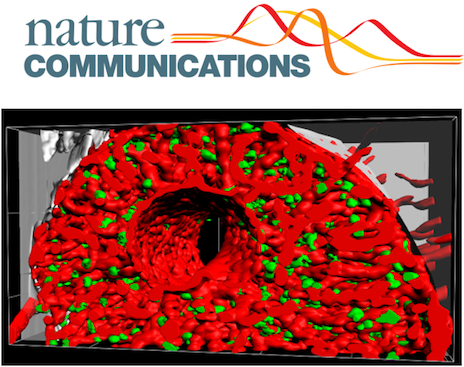New Nature Communications Paper
 Today Nature Communications published a new imaging paper on the physiologic regulation of megakaryocytes within the bone marrow microenvironment.
Today Nature Communications published a new imaging paper on the physiologic regulation of megakaryocytes within the bone marrow microenvironment.
Hematopoietic stem cells do not only give rise to our body’s immune system but also to megakaryocytes. These giant cells reside in the bone marrow and produce blood platelets required for hemostasis and thrombosis.
In a collaboration project with research groups of the Rudolf Virchow Center and University of Würzburg and Charité Berlin we unravel the spatial organization of megakaryocytes to efficiently sustain the production of blood platelets. Combining different experimental strategies, including light sheet fluorescence microscopy (LSFM), dynamic 2-photon microscopy (2PM) and computer modeling helped to systematically investigate megakaryocyte migration and function within their natural environment.
Our long-standing collaboration partners, Dr. David Stegner and Prof. Katrin Heinze, led this strongly interdisciplinary research project. The new data support a model of spatial megakaryocyte organization to warrant effective platelet production. These novel findings challenge the current thrombopoiesis model of megakaryocyte migration and, instead, support a modified model: Sinusoidal precursors replenish megakaryocytes at sinusoids rather than cells from a distant periostic niche. These findings imply that megakaryocytes, which apparently do not require to migrate in order to reach bone marrow blood vessels, should be just increased by numbers to raise platelet counts in patients.
Reference:
